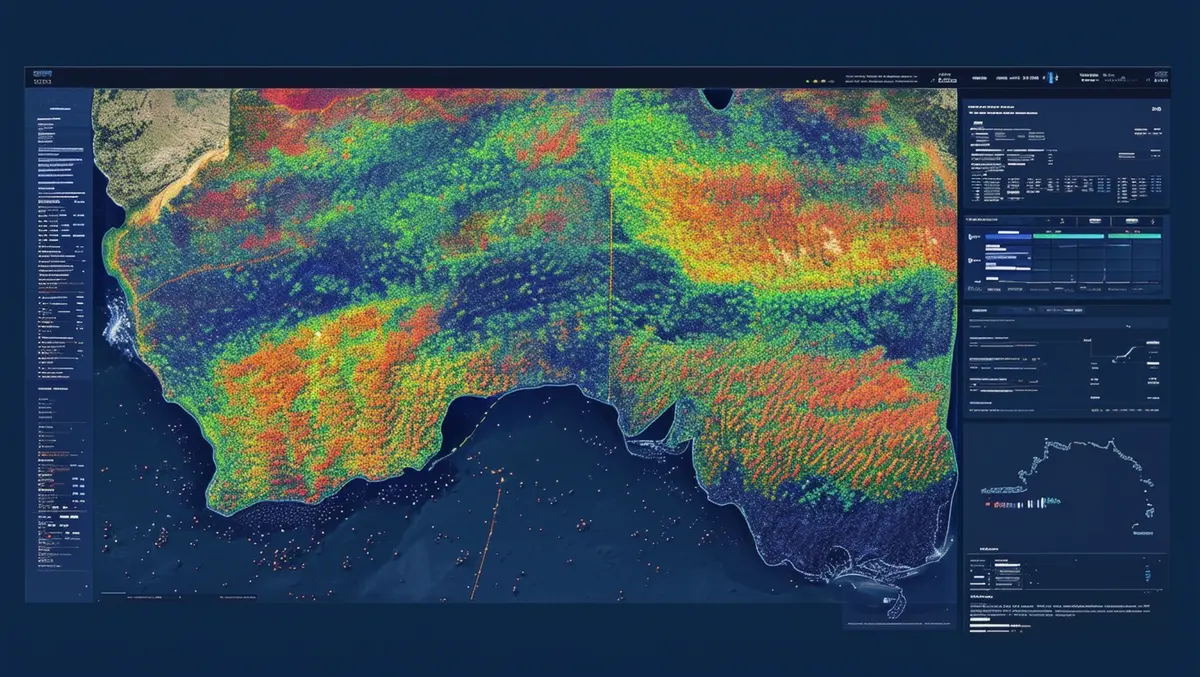
DAS uses AI to reveal varying Australian crop yields
Technology company DAS has released its first public, detailed region-by-region growth snapshot for winter crop production.
Utilising satellite technology and machine learning, DAS provides public measurement of Net Primary Productivity (NPP), a biophysical estimate of plant growth rate that corresponds with crop yield. This new data complements broader state estimates previously released by government agency ABARES.
According to DAS, the figures form part of a broader suite of Grain Intelligence reporting metrics. These metrics offer detailed estimates for crop area, yield, production, hay area, and harvest progress, with flexibility in defining reporting regions. The models are derived from over 109,000 ground truth locations, including more than 13,000 locations from the year 2024.
"The focused, regional data we're releasing today is just a sample of what our platform is capable of producing," DAS CEO and co-founder Anthony Willmott said. "With climate change playing an escalating role in harvest variance and food security, many of our clients rely on our data to make decisions about harvesting and understand the market conditions for various crops at precise locations. We've seen this in today's data. High variance in rainfall across Australia has essentially made some of our lowest producing areas turn out a bumper crop, and our grain powerhouse regions hit record lows in terms of expected yield."
Willmott further highlighted the critical importance of accurate crop predictions for Australia's agricultural sector. "More broadly, accurate crop predictions are critical for Australia, with the country consistently ranking as one of the top 10 global producers of critical commodities such as wheat, canola and barley," he added.
He likened advancements in crop forecasting to improvements in weather forecasting. "Crop forecasting is a little like predicting the weather. Thanks to advances in technology, it's seen a massive step-change with our three and four-day forecasts now as accurate as our one-day forecasts were 30 years ago. In the same way, machine learning, earth observation, geospatial technology and remote sensing are today transforming the future of crop prediction for better food forecasts," Willmott explained.
According to DAS, its data has been instrumental for key stakeholders across various sectors. Over the past five years, the company's data solutions have aided in decision-making for policy agendas involving risk mitigation, food security, and trade. Financial institutions and insurance firms are also leveraging this data to manage and mitigate risk amid increasing climate variability.
"Clients today say we are the country's largest forecaster using machine learning methods supplemented by ground truthing. Not only are we a world-leader in this space, but the models we have developed are globally significant in that they are created and implemented for highly variable climates," Willmott stated.
The top 10 cropping regions, as ranked by change in NPP, include areas such as Walgett, NSW (103% above the 10-year average), Moree Plains, NSW (79%), and Balonne, QLD (79%).
The lowest 10 cropping regions by change in NPP showed notable declines, including Mount Remarkable, SA (-50%), Streaky Bay, SA (-50%), and Murray Bridge, SA (-48%).
Willmott commented on the variability of crop conditions revealed by the data. "This data illustrates how variable crop conditions can be between seasons and across the country. On the back of well-timed and above-average rainfall, Northern NSW LGAs such as Walgett and Moree Plains are having their best seasons since 2010. Meanwhile, most parts of SA are looking similar (in terms of NPP) to the drought year of 2017," he noted.
"While ABARES data is forecasting a 9% decrease in winter crop production in South Australia, our data does not leave us that optimistic. It provides further context to some of the hardship farms may face this season due to drought," Willmott added.


